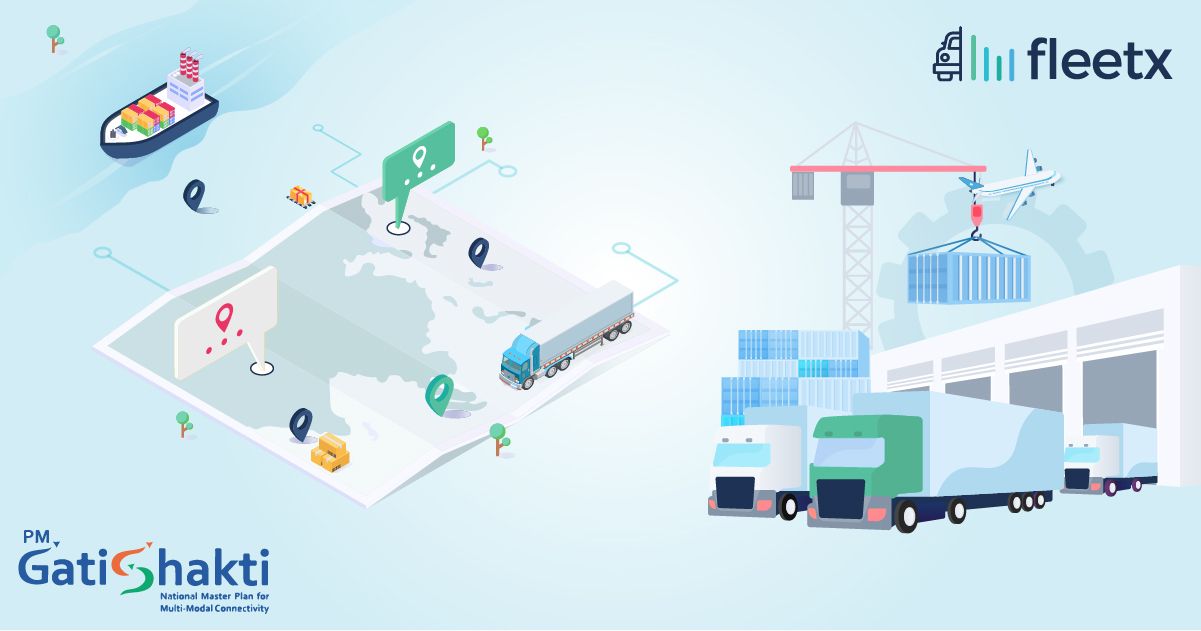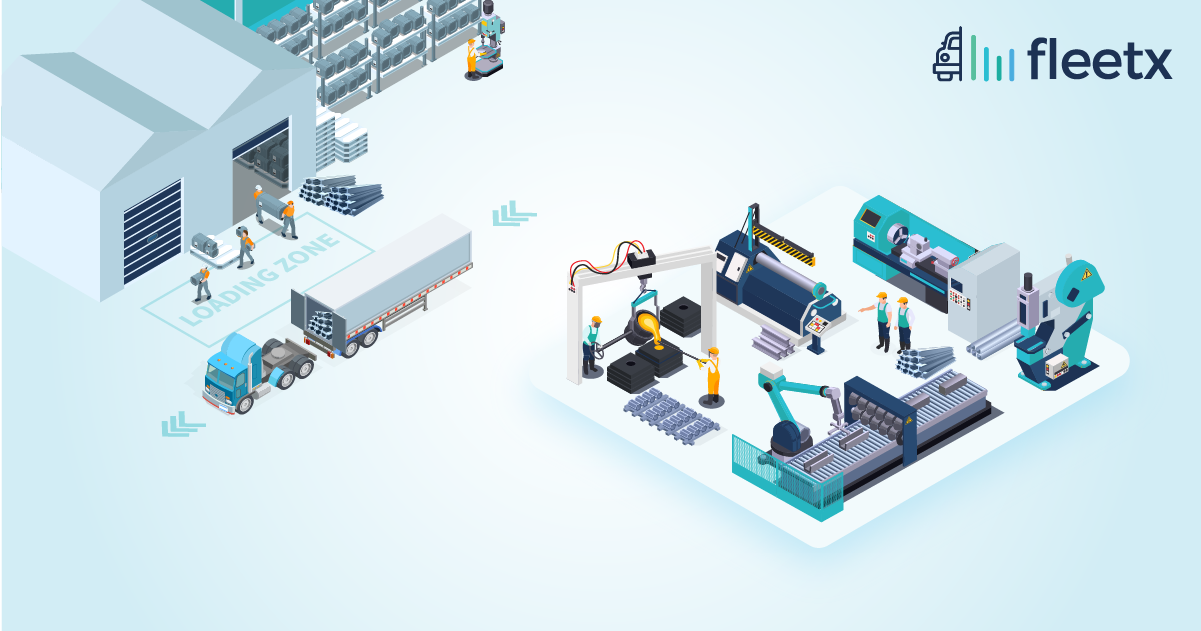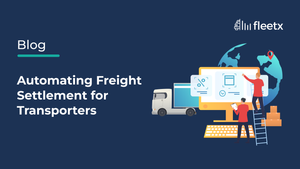
The logistics sector is seen as a critical sector to enhance international trade as a result of digitization and globalization. A lot of business sectors rely on the logistics and freight industry, which is growing quickly and is considered as the foundation of the Indian economy since it provides cost-effective, and efficient transportation of goods throughout India. The logistics industry is responsible for 14.4% of the Indian economy's total contribution, a sizable share that is expected to grow at a CAGR of 15-20% in the coming years.
The logistics industry has now entered a new phase of expansion. The government wants to establish the market after seeing its potential for expansion and the government has taken many measures in the past few years to grow and prosper in the logistics sector making the logistics process accurate and cost effective. One of the major steps taken by the government in the previous budget last year was “The Gatishakti Masterplan” for providing multimodal connectivity infrastructure to various economic zones.
What is the National Logistics plan?
On September 17, 2022, Prime Minister Narendra Modi introduced the National Logistics Policy (NLP) in New Delhi. It is a comprehensive effort to establish an interdisciplinary, cross-sectoral, and multijurisdictional framework for the growth of the whole logistics ecosystem to solve the problem of high cost and inefficiency. The initiative seeks to improve both the efficiency with which items are transported around the nation and the competitiveness of Indian exports on both national and international markets. Additionally, it seeks to improve economic development and expand job options.
Currently, nations like Japan and Germany only spend 8 to 9 % of their GDP on logistics costs, compared to India's spending of close to 13 to 14%. A Comprehensive Logistics Action Plan (CLAP) will be used to implement the National Logistics Policy. According to Indian logistics, CLAP comprises eight key actions and we have talked about it in brief in the following points:
(i) Integrated Digital Logistics Systems: A unified logistics interface to link multiple data sources at one place.
(ii) Standardization of physical assets & benchmarking service quality standards: Improving ease of doing business in logistics including transportation infrastructure, warehousing, temperature-controlled logistics, packaging, etc.
(iii) Logistics Human Resources Development and Capacity Building: logistics human resource strategy and develop action plans to address skill development.
(iv) State Engagement: Encourage the development of state- or city-level logistics strategy.
(v) EXIM (Export-Import) Logistics: Creating an efficient and reliable logistics network, with transparent and streamlined cross-border trade facilitation.
(vi) Service Improvement framework: Enable seamlessness between sectors, promote standardization, formalization and eliminate fragmentation.
(vii) Sectoral Plan for Efficient Logistics: Sectoral Plans for Efficient Logistics (SPEL) lined up with PM GatiShakti.
(viii) Facilitation of Development of Logistics Parks: Promoting Logistics parks which acts as hubs for intermediary activities in the supply chain connected by a transportation network.
Purpose of drafting the NLP
- The National Logistics Policy (NLP) will aid in enhancing both Ease of Doing Business.
- The National Logistics Policy will work together with other programmes like the PM Gati Shakti Pariyojna and the Bharatmala Initiative to break down organizational structure and boost the nation's logistics efficiency.
- The goal of the policy is to expand job possibilities, boost economic growth, and promote the competitiveness of Indian commodities.
- With the help of the National Logistics Policy 2022, India has potential to increase its ability to compete internationally, generate more employment, and perform better in international rankings.
- The National Logistics Policy will facilitate speedy last-mile delivery while simultaneously aiming to reduce food waste.
Key Features of NLP 2022
The New Logistic Policy 2022 contains the four essential crucial characteristics:
Integration of Digital System (IDS): 30 distinct systems from seven different departments, including the road, rail, customs, aviation, foreign trade, and commerce ministries, would be digitally connected. The shorter freight transit will be improved.
Unified Logistics Interface Platform (ULIP): It would consolidate all digital services relating to the transportation industry into a single interface, relieving exporters of a number of extremely time-consuming and onerous procedures. Additionally, it will result in easy freight movement.
Ease of Logistics (ELOG): To make the laws clearer and the logistics industry easier to operate, a new policy will be put into place. Industry organizations can immediately address any such issues that are hindering their operations and performance with the government entities using this platform.Furthermore, a thorough system has been established for the quick handling of such matters.
System Improvement Group (SIG): frequent monitoring of all logistics-related initiatives and removal of any obstacles.
Let us look into the impact NLP has on Manufacturers , Transporters and Consumers:
Manufacturers: As the raw material in a manufacturing plant is the fundamental component utilized to begin the production process. To create the finished product, the raw material goes through several procedures and warehouses. However, the delay in shipping needs increases the cost to producers. Every additional expense and inefficiency reduces the profit margin as items move down a production line. NLP will make manufacturing simple and reduce difficulty in transportation connectivity will let all the enterprises thrive in the fiercely competitive global market.
Companies can categorize materials as they move through the process, from raw materials to works-in-progress, and finally, a finished product through the Integrated Logistics Interface and also they will be able to track costs and inefficiencies. Through this the entire process can become fast and accurate.
Manufacturers will be benefited because of the state engagement and better transportation networking around road , rail, foreign, custom, aviation and streamlined cross- border trade. This will allow them to transport goods across the world efficiently. The policy has the potential to fulfill the market needs.
Transporters: The National Logistics Policy encourages digitalization throughout the logistics industry, and the unified logistics interface may be considered the industry's ground-breaking policy. Since everything will be shown at one place, it will surely reduce time, increase visibility, aid in optimal truck usage, and make it simple to track the items at all times. It may eliminate the inbound and outbound logistics mistakes, resulting in a quick and effective procedure overall.
Consumers & Society: Consumers and society will benefit significantly if the policy is implemented. Firstly , market inflation will reduce as the manufacturers will be able to supply according to the desirable demand and this will also increase the purchasing power of the consumers. The increasing demand and cost- effective technique for manufacturers can motivate them for standardization and quality products. In the longer run increasing demand will also increase job opportunities.
Road Ahead
The most important step right now is to take India’s economic growth to the next level and to put India's logistic sector on the map globally. In this scenario, National Logistics Policy is the game-changing move. NLP (National logistics policy) is making it possible to go forward with the development of unified platforms that will offer a platform for logistics while also enhancing internal working and communication procedures.
Every day, the competition gets stronger, making it easier for success to emerge and evolve. Additionally, it is predicted that the Indian logistics sector would be worth about USD 215 billion in the next two years as opposed to roughly USD 160 billion at the moment, and realizing and working on NLP will make the logistics dream come true.
What is the national logistics policy 2022?
National logistics plan is an effort to implement an integrated and technologically enabled approach to logistics operations, which will be effective throughout the entire process and be useful in lowering logistics costs in the nation from the present levels of 13–14% of GDP.
It was introduced with a thorough action plan and important components like export-import logistics, sectoral plans for effective logistics, integrated digital logistics systems, a unified logistics interface platform, logistics park development facilitation, standardization of physical assets and benchmarking service quality standards, state engagement, human resource development and capacity building, and export-import logistics.
What is logistic policy?
Logistics policy is a set of policy frameworks in order to improve the competitiveness of Indian commodities in both national and international markets, logistics strategy is essential for lowering logistics costs in India. Lower logistics costs boosts economy-wide efficiency by reducing waste, promoting value creation, and fostering entrepreneurship.
What percentage of GDP is logistics in India?
The Indian logistics industry is worth $150 billion USD and accounts for 14.4% of the GDP.







